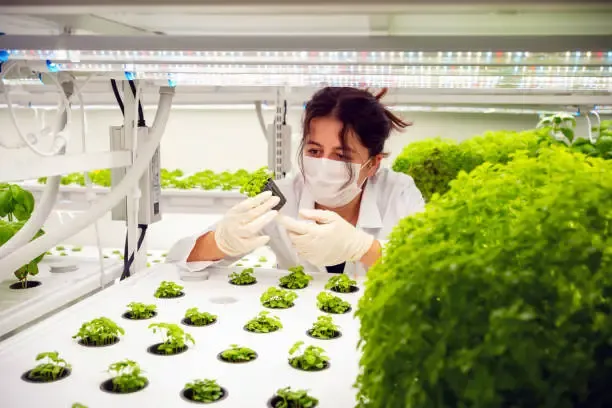Hydroponic gardening is an amazing method for growing plants using water rich in nutrients, instead of soil. This technique can lead to great success in your garden. However, just like traditional gardening, it has its own challenges. In this article, we're going to look at some usual problems that come up with hydroponic systems and share some tips on how to fix them.
Absolutely, staying on top of your hydroponic system by being observant and taking care of it regularly can help you avoid a lot of typical problems. It's all about the little things and being ready to tackle issues before they grow. Keep a close eye on everything, and you'll have a thriving garden. Wishing you the best with your hydroponic journey!
(2) Troubleshooting Hydroponic System Problems - Sundance Hydroponics https://sundancehydroponics.com/troubleshooting-hydroponic-system-problems/
(3) How To Troubleshoot Common Hydroponic Problems https://growingfoodindoors.com/how-to-troubleshoot-common-hydroponic-problems/
(4) Troubleshooting Your Home Hydroponics System – Farm Culture https://farmculture.com/blogs/hydroponics/troubleshooting-your-home-hydroponics-system
 |
| Hydroponic System | Credit: Phynart Studio |
Ensuring System Integrity
A good Hydroponic system, which is a way to grow plants without soil, needs to be strong and leak-free. If it starts to leak, it could be really bad because you might lose water and hurt your plants. You should check your system often to make sure there are no leaks, paying extra attention to where parts join together. Also, the roots of your plants can grow a lot and sometimes they can block the pipes. Watch the roots of your plants closely and cut them back when they get too big. This will help stop any clogs that could mess up the movement of the nutrient-rich water your plants need.Optimizing Lighting for Plant Growth
Light is a critical component of plant growth, and in hydroponics, it's all about providing the right kind and amount of light. Avoid the temptation to skimp on lighting. Invest in quality LED or fluorescent grow lights that provide the full spectrum of light your plants need. Make sure the lights are positioned correctly, not too far from the plants to prevent stretching and not too close to avoid burning.Balancing Nutrients and pH
One of the most common issues in hydroponic systems is getting the balance of nutrients and pH right. Plants are quite sensitive to their nutritional environment, and an imbalance can lead to poor growth or even plant death. Test your water regularly and adjust the nutrient levels and pH balance as needed. Signs of imbalance can include yellowing leaves or stunted growth, so keep a close eye on your plants' appearance.Preventing Disease and Root Rot
Hydroponic systems, which grow plants in water instead of soil, can sometimes get plant diseases like root rot. This problem is usually because the water isn't clean enough or there isn't enough oxygen in it. To stop this from happening, make sure your system is always clean. You might also want to put in air stones or pumps to put more oxygen into the water. If you ever see that your plants are getting sick, you should take out the sick plants right away and clean everything really well so the disease doesn't spread to other plants.Maintaining Your Hydroponic System
Regular maintenance is key to preventing issues like clogging. Debris or sediment can accumulate and block the flow of water, so it's important to keep your system clean. Use filters to catch debris before it enters the system, and don't forget to check and clean them regularly. Also, keep an eye on the electrical components of your system, such as pumps and lights, to ensure they are functioning correctly.Controlling Environmental Factors
In water-based plant growing systems, like hydroponics, you often have to deal with mold and algae because there's always water around. To fight this, you should not let too much light get to the water with nutrients in it and make sure everything stays very clean. It's also important to watch the temperature because if it gets too hot or too cold, it can make the plants unhappy. Try to keep the place where you're growing your plants at the best temperature for whatever kind of plants you have.Monitoring Plant Health
Finally, pay attention to how your plants are growing. If they're not thriving, it could be due to any number of issues we've discussed. Adjust your lighting, nutrient solution, or pH balance as needed. Also, make sure your plants have enough space to grow; overcrowded systems can lead to competition for resources and poor plant health.Absolutely, staying on top of your hydroponic system by being observant and taking care of it regularly can help you avoid a lot of typical problems. It's all about the little things and being ready to tackle issues before they grow. Keep a close eye on everything, and you'll have a thriving garden. Wishing you the best with your hydroponic journey!
Conclusion
Hydroponic gardening is a great way to grow plants in water that's full of nutrients. It can really work well, but there are some things you need to watch out for. To make sure your garden does well, it's key to keep the system working properly, get the light just right, make sure the nutrients and pH level are balanced, stop diseases and root rot, keep up with system maintenance, manage the environment around your plants, and keep an eye on how healthy your plants are. If you pay attention and take action early, you can steer clear of the usual troubles and enjoy a lush hydroponic garden.
References & Resources:
(1) 15 Common Problems With Hydroponics (And How To Fix Them) https://smartgardenguide.com/problems-with-hydroponics/(2) Troubleshooting Hydroponic System Problems - Sundance Hydroponics https://sundancehydroponics.com/troubleshooting-hydroponic-system-problems/
(3) How To Troubleshoot Common Hydroponic Problems https://growingfoodindoors.com/how-to-troubleshoot-common-hydroponic-problems/
(4) Troubleshooting Your Home Hydroponics System – Farm Culture https://farmculture.com/blogs/hydroponics/troubleshooting-your-home-hydroponics-system

.png)



.jpg)

.jpg)
.jpg)



0 Comments